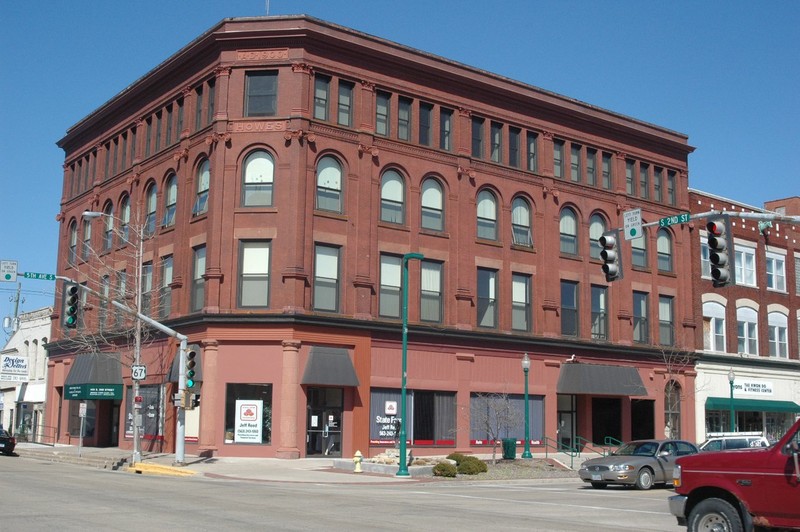Howes Building
Introduction
Text-to-speech Audio
Located in the heart of downtown Clinton, the Howes Building was built in 1900 and has remained the cornerstone of the city's commercial district. Over the years many offices, department stores, and other businesses that contributed to Clinton's growth occupied the building. It is named after local businessman Edward M. Howes, who commissioned its construction and served as mayor for two years. Designed by Josiah Rice, the Howes Building is an excellent example of Classical Revival architecture. It features arched windows, pilasters (columns) with Ionic capitals, and decorative terra cotta detailing. It was added to the National Register of Historic Places in 2004.
Images
The Howes Building is one of Clinton's most important landmarks. It was erected in 1900 and named after its builder, businessman Edward M. Howes.

Backstory and Context
Text-to-speech Audio
Born in Chicago in 1855, Howes was one of thirteen children of Phillip and Esther Howes. Phillip was orphan from England who immigrated to America in 1836 with his adoptive father, William Lewis. Phillip worked as a coal miner then as a railroad fireman and railroad engineer. He moved the family to Clinton in 1859 when the Chicago, Iowa & Nebraska Railroad hired him as an engineer. Phillip was one of the first to plan train lines from Clinton towards the west. He also served as a member of the local school board, a city trustee, and an alderman. He retired in 1872.
As a boy, Edward M. Howes delivered newspapers from a newsstand outside a commercial building called the Toll Block. During that time, he met a jewelry store owner, C.S. Taylor, who introduced Howes to the business, which was housed in the building. Howes' interest in jewelry grew and when he was 15 he bought an interest in Taylor's store. His brother Benjamin did the same. Ten years later, another brother joined the business and it was renamed Howes Brothers.
In the late 1890s, Howes left the business and proceeded to make plans for the Howes Building. By then the city's economy had declined as a result of the lumber mills closing and Howes' business friends advised him against the project. He was proved right, however. The building was a great success and within a few years Howes added the fourth story. The construction of the building marked the beginning of Howes' venture into real estate. His son, Laurence, opened a real estate business in the building in 1923. It appears the Howes' family owned the building at least through the early 2000s.
In addition to serving as mayor, Howes also was a member of the Clinton YMCA board of directors and the local Scottish Rite Masons. He formed a booster club to promote the city as well.
Sources
Erickson, Sam. "Howes Building." National Park Service - National Register of Historic Places Nomination Form. December 15, 2004. https://npgallery.nps.gov/GetAsset/74f558e2-aa62-43c9-8bfa-71ca25ae8665.
Michael J. Kearney, via Wikimedia Commons: https://commons.wikimedia.org/wiki/File:Howes_Building.JPG
